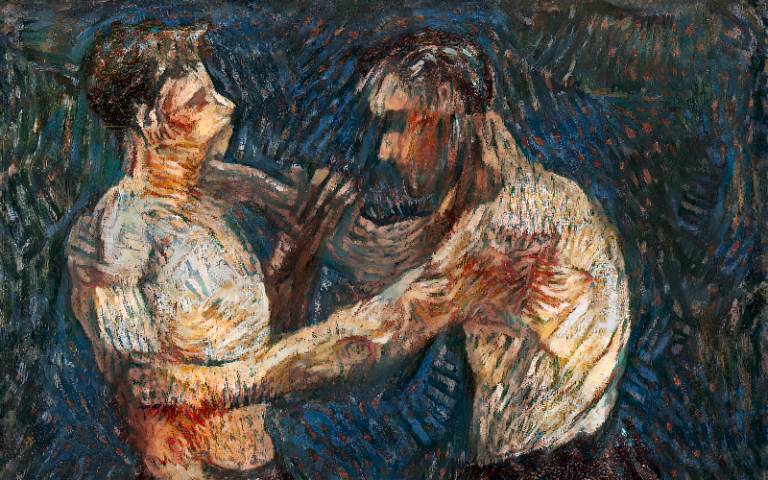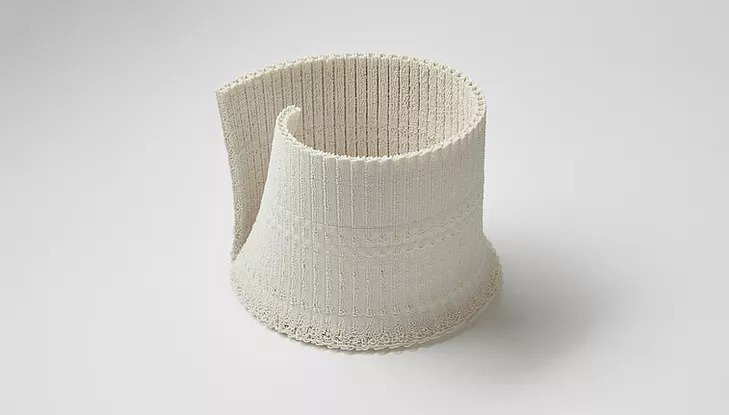Researchers at University College London (UCL) have combined X-ray, Artificial Intelligence (AI) and 3D printing technologies to reproduce a lost Vincent Van Gogh painting.
Working with artist Jesper Eriksson, PhD students Anthony Bourached and George Cann have developed a workflow in which X-ray imaging can be used to see through layers of paint, including those used to paint over existing works.
This data can then be fed into an AI algorithm capable of extrapolating an artist’s style, and 3D modeling an artwork that imagines what the original might have looked like. By applying their process to a Van Gogh painting, the researchers have found it possible to uncover and recreate one of his lost works known as The ‘Two Wrestlers,’ although they admit it’s impossible to verify the accuracy of their work.
“How much it is like the original painting is impossible to tell at this point because the information doesn’t exist,” says Bourached, who is researching Machine Learning and Behavioral Neuroscience at UCL. “I think it’s very convincing – by far the best guess we can get with current technology.”

Bringing lost artwork to life
Eriksson and Bourached’s Van Gogh recreation is their latest in a series of reimaginings developed as part of their ‘NeoMasters’ collection. Since 2019, the researchers have worked to bring lost paintings to life, using a series of algorithms that work by identifying the edges of a given piece, before creating an outline of any figures identified via X-ray data.
The resulting data can then be fed into a neural network that learns from the artist’s previous works to predict how the painting would’ve looked, from colors down to fine details such as brushstrokes, creating the basis for a 3D printable replica.
Using this technique, the team has managed to reconstruct a number of lost artworks. In 2021, the UCL researchers were able to reproduce Pablo Picasso’s ‘The Blind Man’s Meal,’ a piece hidden underneath one of his ‘Blue Period’ paintings, an unfinished artwork of a crouching nude woman, also depicted in the background of his ‘La Vie’ painting.
“I believe Picasso actively welcomed such forensics, since he himself said; ‘I just painted the images that rose before my eyes. It is for other people to find the hidden meanings,'” Bourached claimed at the time. “Like Leonardo imagining the helicopter, was Picasso envisioning technology that could recall his lost or incomplete work? It is certainly a hidden secret that La Vie points to.”

Uncovering a hidden Van Gogh
Van Gogh’s ‘Two Wrestlers’ was first discovered a decade ago by experts at the University of Antwerp, who were investigating whether the work ‘Still Life with Meadow Flowers and Roses’ was authentic. While doing so, those examining the artwork used X-rays to see through the layers of paint, and discovered two figures had been painted over.
As it turned out, these two hidden wrestlers had been created using brush strokes and pigments consistent with Van Gogh’s prior work, and the subject matter was a common theme at the Antwerp Art Academy where he studied in 1886. Van Gogh also wrote a letter to his brother Theo that year in which he said he’d “painted a large thing with two nude torsos – two wrestlers,” thus proving it was his.
Utilizing the same process that helped recreate their previous NeoMasters series pieces, Bourached and Cann found they were also able to resurrect the Van Gogh painting, earlier this year. As with their other reconstructions, the UCL duo’s project saw them deploy a neural network that learned from hundreds of Van Gogh’s other works, to create a piece of such quality, it was displayed at the Louvre.
The pair’s 3D printed Two Wrestlers restoration was displayed at the museum in Paris from September 1-4, 2022 as part of the FOCUS Art Fair. Held in conjunction with the MORF Gallery in California and the researchers’ company Oxia Palus, the exhibition also included recovered paintings by artists like Leonardo Da Vinci and Amedeo Modigliani.
Those still hoping to catch a glimpse of the team’s 3D printed art collection can check it out during the Deeep AI Art Fair, which is set to take place in London from October 10-13, 2022.

3D printing’s artistic applications
Advanced visualization and manufacturing technologies continue to gain traction as a means of both producing and recreating works of art. Just last year, Maltese ceramic artist Nico Conti exhibited a 3D printed porcelain artwork series at the Collect art fair with lace-like patterns. Interestingly, using glitches in the process, the artist was able to create flaws and unique extrusions on his structures’ surfaces.
At the Victoria University of Wellington, meanwhile, student Joseph Coddington has developed a means of voxel 3D printing Claude Monet paintings. Having used Adobe Photoshop to replicate the painting digitally, the researcher then deployed a Stratasys J750 3D printer to create a replica of a panel from the artist’s Waterlillies collection.
Elsewhere, in the adjacent field of artifact restoration, 3D scanning and 3D printing have also been utilized multiple times to repair centuries-old architecture. In one such case, Prototek used 3D printing to preserve 14th century doors at an Italian baptistery that were suffering from deterioration, by scanning the originals and replacing them with exact replicas.
Nominations for the 2022 3D Printing Industry Awards are now open. Who do you think should make the shortlists for this year’s show? Let us know by casting your vote now.
To stay up to date with the latest 3D printing news, don’t forget to subscribe to the 3D Printing Industry newsletter or follow us on Twitter or liking our page on Facebook.
While you’re here, why not subscribe to our Youtube channel? featuring discussion, debriefs, video shorts and webinar replays.
Are you looking for a job in the additive manufacturing industry? Visit 3D Printing Jobs for a selection of roles in the industry.
Featured image shows the UCL researchers’ 3D printed recreation of The Two Wrestlers. Photo via UCL.



